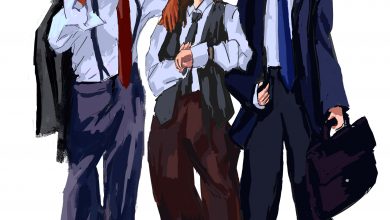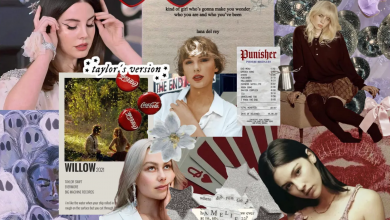‘The Curse of La Llorona’ Deserves La Chancla

Image source: YouTube.
Here’s a hypothetical: if you were given the task of crafting a movie centered around a myth from Latinx culture, what would you do? Would you set the film in the U.S. and not Latin America? Hire two white writers? Make a white woman your lead character?
Well, that’s exactly what The Conjuring Universe’s newest film—“The Curse of La Llorona”—decided to do. Even though it is based on the famous Latin American myth of the ghost La Llorona, the movie tries to distance itself from its source material on every level. Set in Los Angeles and not in Latin America, the two writers tasked with writing the film—Mikki Daughtry and Tobias Iaconis—are white. Instead of a Latinx actor/actress, the protagonist is named Anna Tate-Garcia and played by Linda Cardellini, who is white. And as if this doesn’t already seem like a disaster just waiting to happen, the director—Michael Chaves—is not Latinx either but rather Portuguese-American—so, for the third time in a row, also white.
The tale of La Llorona, while usually associated with Mexico, is a story known throughout Latin America and thus has been told in many different variations over time. The most well-known version, which the film itself uses, is that La Llorona was originally a young beautiful woman who married a wealthy man and had two children with him. One day, she sees him with another woman and drowns their children when consumed by rage. She realizes what she has done and then spends the rest of her days weeping and wailing, trying to find her dead children even once she becomes a ghost. The story can differ quite a bit, depending on what version you were raised with. Sometimes, she kills herself after discovering she has murdered her children. In another version, her husband never factors in, and her children simply die for other reasons. Essentially, a woman becoming a long-grieving ghost after the deaths of her children is the one major constant of the myth.
As a folktale, La Llorona’s story is often used as a warning for children to keep their behavior in check or ensure they don’t wander from home at night or La Llorona could possibly find and drown them. It is a myth that is both creepy and sad. While the listener can feel empathy for La Llorona and the pain she experiences, they will probably still be terrified by the thought of this weeping woman who is out there, ready to steal them away or worse.
So, of course, “The Curse of La Llorona” robs its central narrative of any of these important emotions. While keeping the central elements of the myth, the film turns La Llorona from a creepy ghost into a mere jumpscare factory. At every opportunity, when she could be trying to lure the children closer to her, she runs or lunges at them and screams in a monstrous way. She’s not wailing; she’s screeching. She possesses new abilities not in the original story, like burning anyone she grabs onto. And while they retained the traditional aesthetic of her white gown and constant weeping, the people behind designing her appearance clearly cared more about making her fit in with the other ghosts in The Conjuring Universe, giving her yellow eyes to seem demonic like the Nun from 2018’s “The Nun.”
By making La Llorona into more of a monster than a ghost, the film strips her of any of the empathy we may feel for her in the original tale. No longer is the narrative weight placed on her being a grieving mother and a woman scorned. Her backstory is handled briefly in the beginning of the film, and then Father Perez (played by Tony Amendola) recites exposition at the clueless Anna so that she understands the myth herself. In one scene near the end, she briefly returns to her human appearance before changing back and screeching once again into a mirror in yet another jump scare. That’s it; that’s as much humanizing and empathy as the film has to offer.
In the original folktale, I have always been personally most terrified by the thought that a mother could drown her children. Often, we think of mothers as the quintessential figures for unconditional love and nurturing, so to know that such love could be a lie and turn to violence is extremely frightening to think about as a child. After all, if it could happen to those kids, who’s to say it couldn’t also happen to me? By stripping the humanity out of La Llorona, the film undercuts the horror of the original tale. It’s hard to think of her as a mother when she’s just popping up randomly and screaming in everyone’s face.
This complete demonization of La Llorona as a figure may have more insidious implications. In taking any compassion away from her story, the film—perhaps unintentionally—also feeds into the dehumanization of Latinx people in the U.S. As most people in the U.S. all probably know at this point, Donald Trump does not like Latinx people—especially Mexicans, though this might be a result of him lumping all Latinx people together under that label. Before he was even elected as the President of the U.S., he made his feelings clear, saying, “They’re bringing drugs. They’re bringing crime. They’re rapists. And some, I assume, are good people.” His administration has kept up this sentiment, continuing to push for a border wall and separating migrant children from their parents in order to place them in detention centers.
With this hostile political climate directed towards Latinx people in the U.S., “The Curse of La Llorona” seems to feed into all of these fears in the worst way. By setting the film in Los Angeles, the ghost is now invading U.S. soil—almost as if she’s implied to be a migrant herself. The casting of Linda Cardellini as Anna makes it so that La Llorona is now specifically terrorizing a white woman and her family. Anna’s children appear to be Latinx themselves, with the film hinting at their father being Latinx given the ‘Garcia’ in Anna’s surname. However, he is dead before the film’s events have even begun and never shows up throughout its runtime.
In this way, the film keeps the children’s ethnicity in ambiguous territory, leaving Anna to definitively categorize them as white.This vagueness allows the audience to interpret that La Llorona has targeted a white family and has come to capture and kill white children. This sentiment feeds into a racist fear of Latinx people and gives the impression that Latinx people are trying to steal away white children when, as shown with the migrant children in detention centers, it is the other way around.
By the end of the film, “The Curse of La Llorona” performs one last feat in insulting its Latinx audience by having Linda Cardellini’s Anna vanquish La Llorona. She stabs the ghost with a wooden cross and completely destroys her, with the film making it seem like she has been banished forever from the mortal world. This act turns Anna into a white savior, able to conquer the spirit in a way that a Latina mother named Patricia (played by Patricia Velásquez) could not earlier in the movie. The fact that this singular white woman kills an ancient Latinx ghost also sends the message that whiteness ensures power and dominance over people of color.
Despite the outrage this twist should produce, I ultimately left “The Curse of La Llorona” with more disappointment than anything else. With such a great and chilling premise to build a story from, the film fails on every level to deliver something more than jumpscares where we might empathize with La Llorona or even the bland family themselves. It is never legitimately scary, creepy, or emotional as it should be. In fact, it’s just boring—extremely boring. For a horror movie about a ghost, this film somehow manages to make you want to sleep through it; if La Llorona wasn’t screeching every ten minutes, I probably would have myself.
In summary, don’t watch this movie. It’s not worth anyone’s time, especially if you’re Latinx.




